When a peculiar fossil was discovered in a limestone quarry near Solnhofen, Germany in 1861, few could have predicted its monumental impact on our understanding of evolution. This fossil, later named Archaeopteryx lithographica, would become one of paleontology’s most celebrated discoveries—a crucial missing link that helped bridge the evolutionary gap between dinosaurs and birds. With its mixture of reptilian and avian features, Archaeopteryx has provided invaluable insights into how flight might have evolved and fundamentally changed our understanding of the dinosaur-bird transition. Let’s explore the profound lessons this 150-million-year-old creature has taught us about the origins of one of nature’s most remarkable adaptations: powered flight.
The Discovery That Changed Everything

The first Archaeopteryx specimen was discovered just two years after Charles Darwin published “On the Origin of Species,” providing timely evidence for his controversial theory of evolution. Found in the fine-grained Solnhofen limestone of Bavaria, Germany, the fossil’s exceptional preservation revealed something extraordinary: an animal with the teeth and bony tail of a reptile, but also unmistakable feather impressions. Hermann von Meyer, who described the fossil in 1861, recognized its significance immediately, naming it Archaeopteryx lithographica—meaning “ancient wing” and referencing the lithographic limestone in which it was found. In total, twelve specimens have been discovered to date, each contributing valuable information to our understanding of this transitional species. The London Specimen, acquired by Richard Owen for the British Museum, became particularly famous for its exquisite preservation and clear demonstration of both dinosaurian and avian characteristics.
A Creature Caught Between Worlds
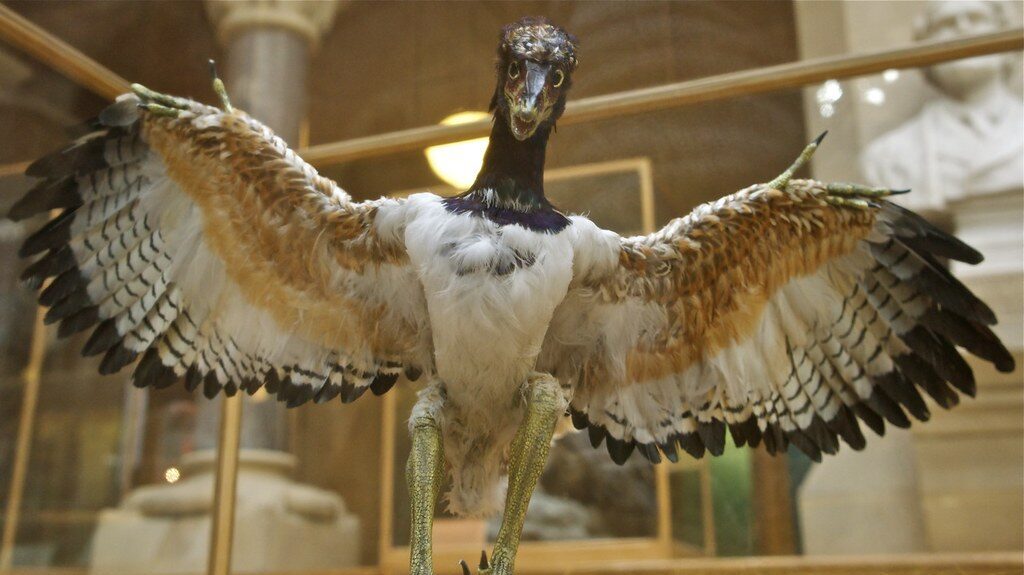
Archaeopteryx represents a perfect evolutionary intermediate, displaying a fascinating mosaic of features from both dinosaurs and modern birds. Standing about the size of a modern raven, it possessed distinctly reptilian characteristics including teeth, a long bony tail, and three clawed fingers on each wing—features absent in modern birds. Simultaneously, it showed unmistakably bird-like traits, most notably the presence of well-developed contour feathers and flight feathers arranged in a pattern similar to modern birds. Its furcula (wishbone) and partially reversed first toe were also avian characteristics, while its flat sternum (breastbone) lacked the pronounced keel seen in strong-flying modern birds. This unique combination of features makes Archaeopteryx the perfect example of a transitional fossil, capturing an evolutionary snapshot of a lineage in transformation.
Establishing the Dinosaur-Bird Connection
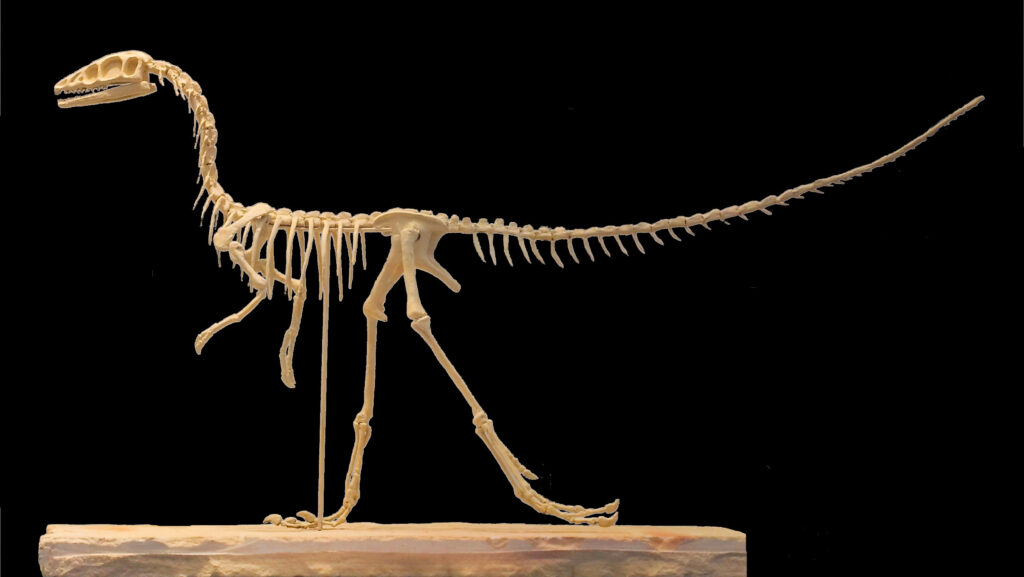
Perhaps Archaeopteryx’s greatest contribution to science was providing the first compelling evidence that birds evolved from theropod dinosaurs, a hypothesis that had been proposed but remained contentious. When Thomas Henry Huxley, Darwin’s prominent supporter, examined Archaeopteryx in the 1860s, he immediately recognized similarities between the fossil and small carnivorous dinosaurs like Compsognathus. This observation led him to suggest that birds had evolved from dinosaur ancestors—a revolutionary idea at the time. Modern cladistic analyses have consistently placed Archaeopteryx at the base of the avian family tree, closer to dinosaurs like Velociraptor and Deinonychus than to modern birds. The discovery of numerous feathered dinosaurs in China’s Liaoning Province since the 1990s has further cemented Archaeopteryx’s pivotal position in demonstrating the evolutionary continuity between dinosaurs and birds, confirming what this single fossil first suggested over 150 years ago.
Feathers Before Flight
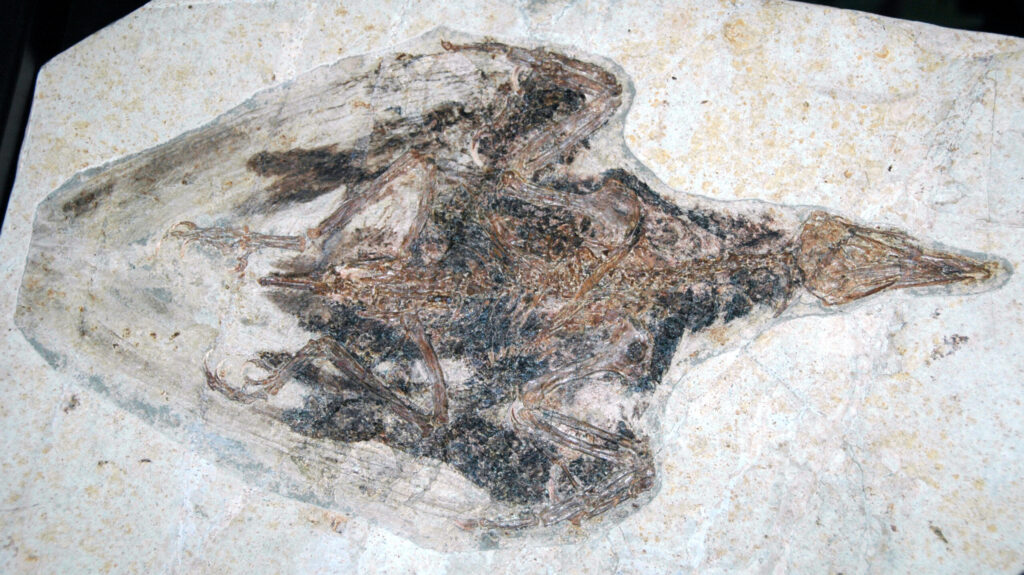
One of Archaeopteryx’s most significant lessons is that feathers evolved before powered flight, challenging earlier assumptions about their original purpose. The fossil clearly demonstrates well-developed contour and flight feathers, suggesting that feathers had already undergone substantial evolution before Archaeopteryx appeared. This observation has led paleontologists to conclude that feathers initially evolved for purposes other than flight, such as insulation, display, or thermoregulation. The discovery of numerous non-flying dinosaurs with various types of feathers—from simple filaments to complex structures—in China’s Liaoning Province has confirmed this insight. Evidence now suggests feathers first appeared in dinosaurs at least 50 million years before Archaeopteryx, evolving through multiple stages of complexity before being co-opted for flight. This evolutionary sequence, first hinted at by Archaeopteryx, demonstrates how complex structures can evolve gradually by serving different functions through time.
Flight Capabilities: A Matter of Debate
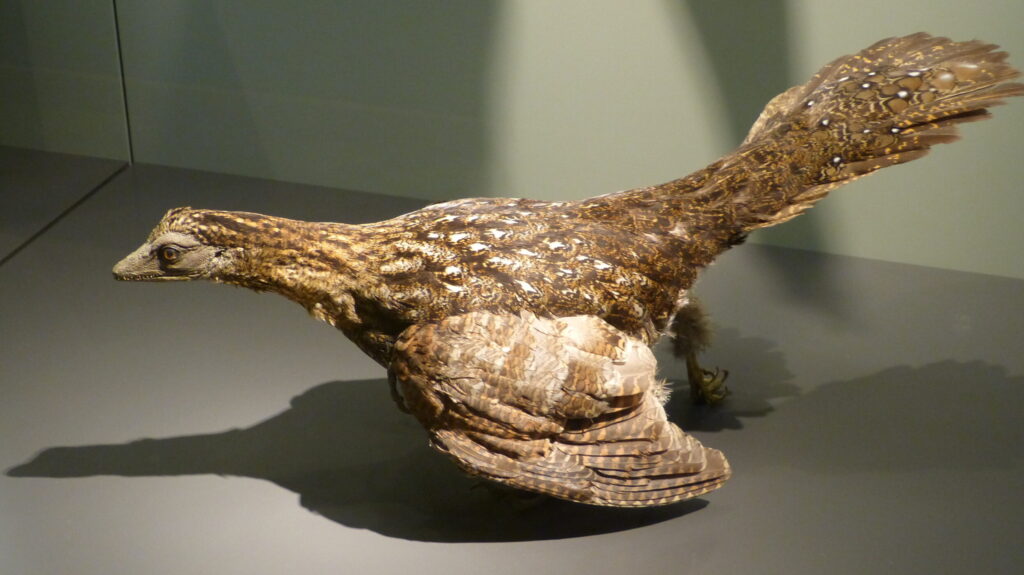
Whether Archaeopteryx could truly fly remains one of paleontology’s most intriguing debates, with the fossil providing important clues about the early evolution of flight mechanics. Detailed analyses of its feather structure show asymmetrical flight feathers similar to those of modern flying birds, suggesting some aerodynamic capability. However, Archaeopteryx lacked several key adaptations present in strong fliers today, including a keeled sternum for anchoring powerful flight muscles and a fully fused hand structure. Biomechanical studies using CT scanning and computer modeling have produced mixed conclusions, with some suggesting it was capable of weak, pheasant-like powered flight over short distances, while others propose it was limited to gliding from elevated positions. Recent research indicates Archaeopteryx may have been capable of “flap-running” up inclines or a form of primitive powered flight, but likely couldn’t take off from a standing position on flat ground. This intermediate flight capability provides valuable insights into how powered flight might have evolved gradually rather than appearing suddenly.
The Arboreal Versus Terrestrial Debate
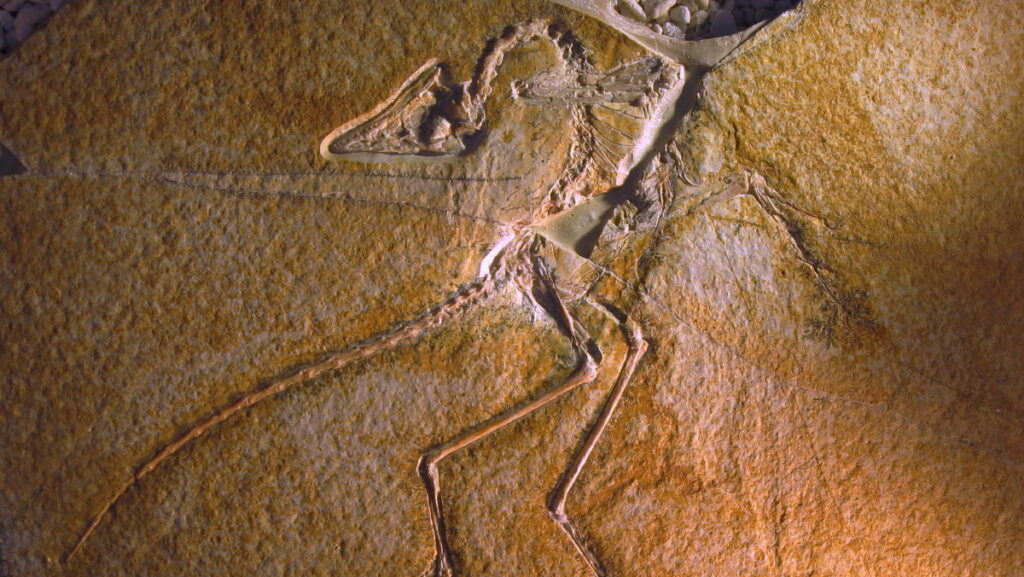
Archaeopteryx has played a central role in the long-standing debate over whether flight evolved from the trees down (arboreal theory) or from the ground up (cursorial theory). Proponents of the arboreal theory point to Archaeopteryx’s curved claws and partially reversed first toe, which might have facilitated perching or climbing. They suggest flight evolved gradually as tree-dwelling ancestors began gliding between branches, eventually developing powered flight. Supporters of the cursorial theory highlight Archaeopteryx’s long legs and dinosaurian features, suggesting it was primarily a ground-dweller that used wing-assisted running and leaping to capture prey or escape predators. Recent analyses of its bone structure and limb proportions indicate Archaeopteryx was likely capable of both ground running and some arboreal behaviors, suggesting the evolution of flight may have been more complex than either theory alone proposes. The fossil thus teaches us that evolutionary transitions rarely follow the simple, linear pathways we initially imagine.
Archaeopteryx’s Unique Paleoenvironment

The exceptional preservation of Archaeopteryx specimens offers valuable insights into the environment where this transitional creature lived during the Late Jurassic period. All specimens have been recovered from the Solnhofen Limestone of southern Germany, which represents what was once a series of shallow lagoons surrounded by arid islands in a tropical sea. These lagoons had hypersaline, oxygen-poor bottom waters that prevented decomposition and scavenging of organisms that died and sank there, allowing for extraordinary preservation of soft tissues like feathers. The landscape was dotted with small islands covered in conifers and cycads, providing potential habitats for a creature with both terrestrial and potentially arboreal adaptations. Analysis of other fossils from the same deposits reveals Archaeopteryx shared its environment with pterosaurs, small dinosaurs, and various marine creatures, suggesting it occupied a specialized ecological niche in this archipelago environment. This paleoenvironmental context helps us understand the selective pressures that might have favored the evolution of flight-related adaptations.
The “Urvogel” and Its Cultural Impact
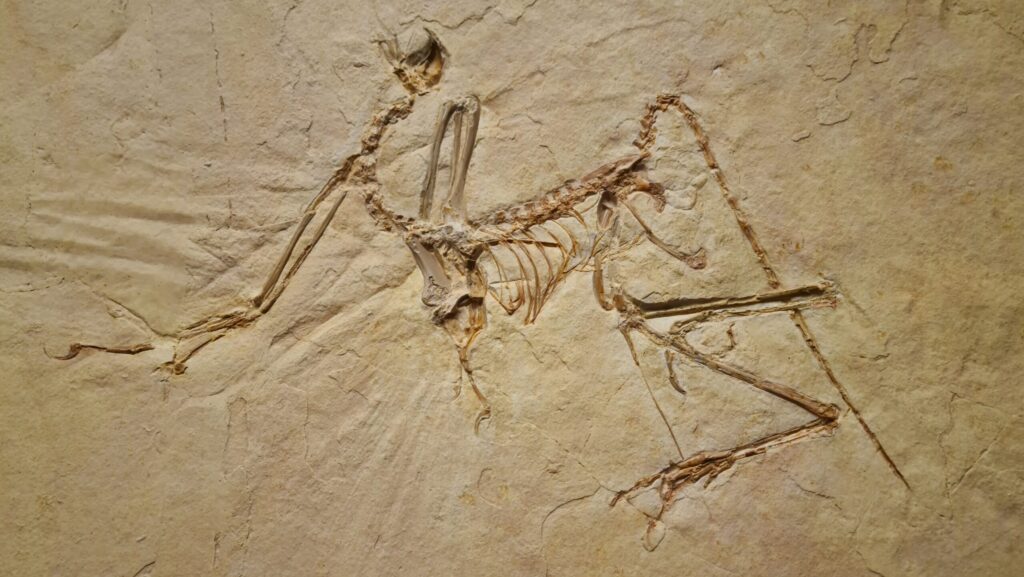
Beyond its scientific significance, Archaeopteryx—often called the “Urvogel” or “first bird”—has had a profound impact on popular culture and public understanding of evolution. When first discovered, it created a sensation as Darwin’s theory of evolution was still highly controversial, with many newspaper accounts heralding it as the missing link that Darwin’s theory predicted should exist. The fossil became a powerful symbol of evolutionary transition, featured in countless textbooks, museum exhibits, and popular science writings. In Germany, Archaeopteryx has achieved national treasure status, with the most complete specimen (the Berlin specimen) proudly displayed at the Museum für Naturkunde. Archaeopteryx has appeared on postage stamps in multiple countries and features prominently in artistic reconstructions of prehistoric life, helping the public visualize the concept of evolutionary transitions. Few fossils have done more to bridge the gap between scientific understanding and public appreciation of evolution’s creative power.
Beyond Archaeopteryx: The Expanded Avian Family Tree
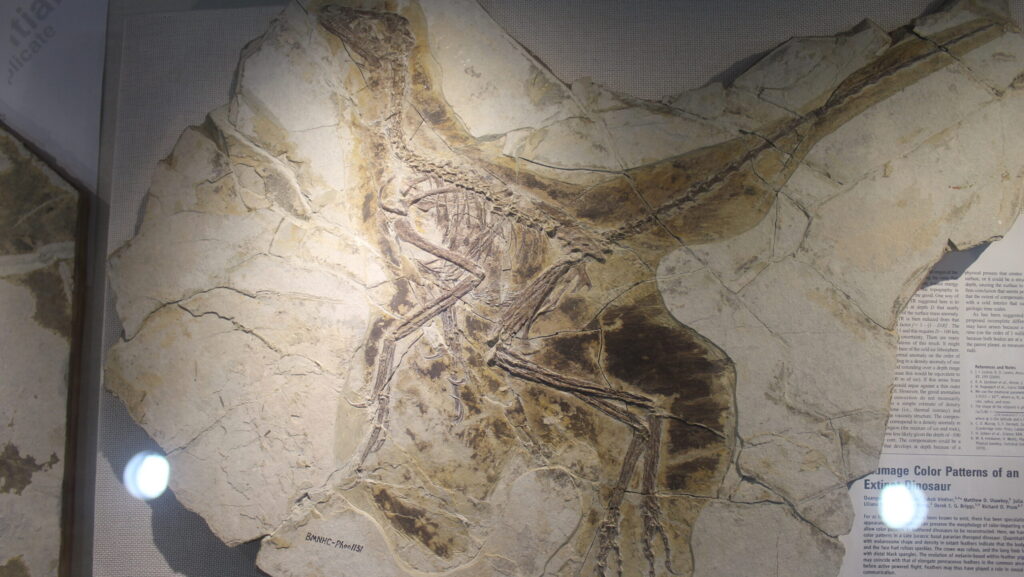
While Archaeopteryx was once considered the earliest and most primitive bird, subsequent fossil discoveries have dramatically expanded our understanding of early avian evolution. The rich fossil beds of northeastern China’s Liaoning Province have yielded numerous feathered dinosaurs and early birds that both predate and postdate Archaeopteryx, placing it within a more complex evolutionary context. Discoveries like Anchiornis, which lived several million years before Archaeopteryx, possessed four wings and shows that many “bird-like” features evolved earlier than previously thought. Other fossils like Xiaotingia and Aurornis have complicated the picture, sometimes being classified as more primitive than Archaeopteryx in phylogenetic analyses. Meanwhile, slightly younger fossils like Confuciusornis show more advanced bird-like features, including a toothless beak and pygostyle (fused tail vertebrae). These discoveries teach us that Archaeopteryx, while pivotal, represents just one branch in a complex bush of evolution rather than a single link in a chain leading directly to modern birds.
Modern Analytical Techniques Reveal New Insights
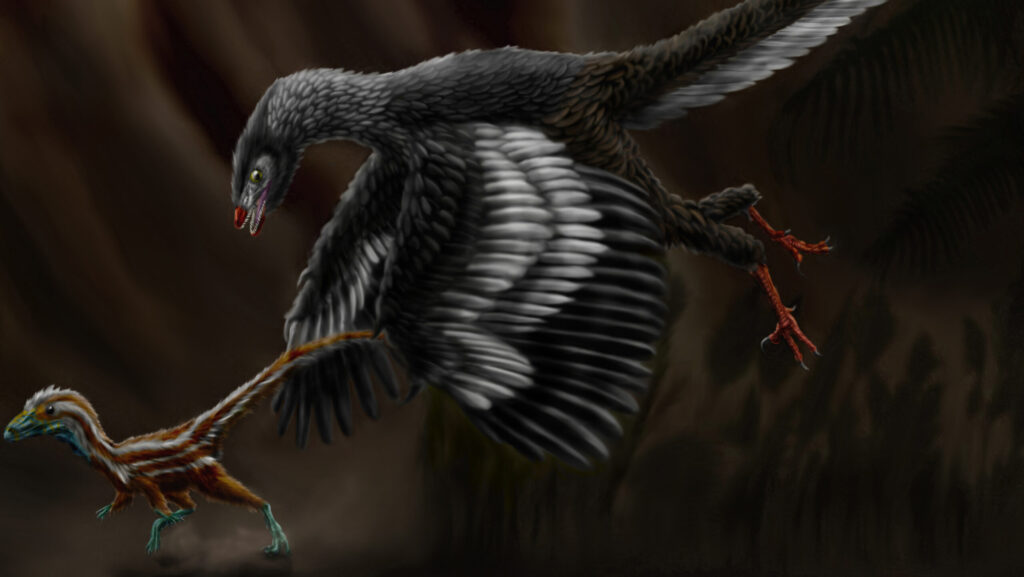
Advanced scientific techniques developed in recent decades have allowed researchers to extract new information from Archaeopteryx specimens, continuing to enhance our understanding of this iconic fossil. Synchrotron imaging, which uses high-powered X-rays, has revealed previously unseen details of bone structure and feather attachment without damaging the precious fossils. Chemical analysis of melanosomes preserved in the feathers suggests Archaeopteryx had predominantly black plumage, possibly with lighter wing edges—information that would have been unimaginable to the fossil’s early describers. Laser-stimulated fluorescence imaging has revealed soft tissue details not visible under normal light, while computerized tomography (CT) scanning has allowed scientists to examine the brain case and inner ear structure, suggesting Archaeopteryx had the neurological capacity for coordinated flight. Isotopic analyses of the limestone matrix have provided more precise dating and environmental information. These technological advances demonstrate how a single fossil can continue to yield new insights over generations as our investigative tools improve.
The Evolution of Complex Adaptations
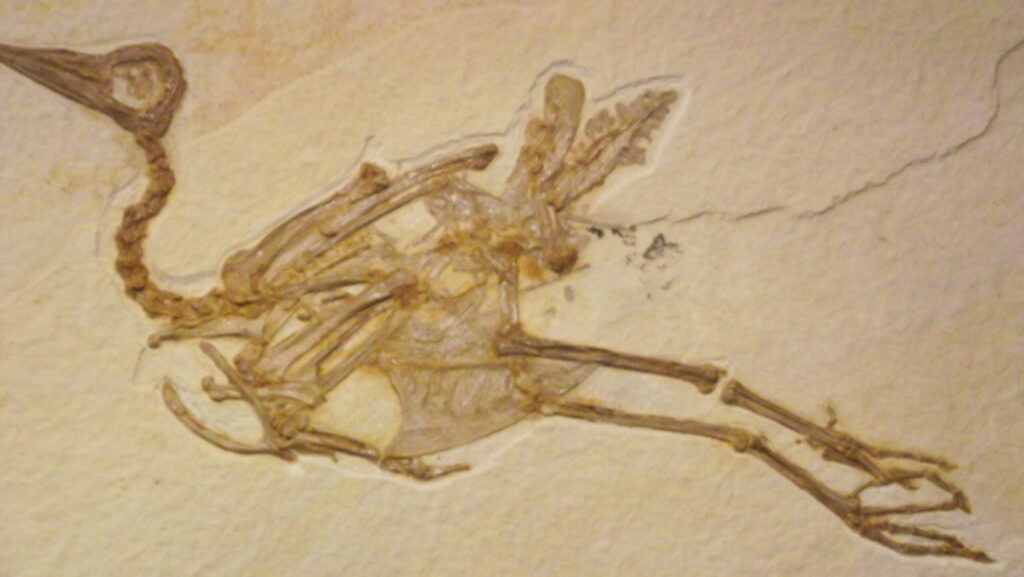
Archaeopteryx provides a powerful case study in how complex adaptations like flight evolve through a series of incremental steps rather than appearing suddenly. The fossil shows that many of the individual components necessary for flight—feathers, lightweight bones, and modified forelimbs—evolved separately before being integrated into a flight-capable system. This exemplifies the concept of exaptation, where structures that evolved for one function are later co-opted for another; feathers likely evolved for insulation or display before being repurposed for aerodynamic functions. The gradual assembly of flight-enabling features visible in Archaeopteryx and related species refutes the creationist argument that complex adaptations could not have evolved through natural selection. Archaeopteryx’s mosaic of features demonstrates how evolutionary transitions occur through a series of functional intermediates, each viable in its own ecological context. This insight extends beyond flight to help us understand how other complex adaptations, from echolocation to bipedalism, might have evolved through similar incremental processes.
Archaeopteryx in Modern Phylogenetic Context
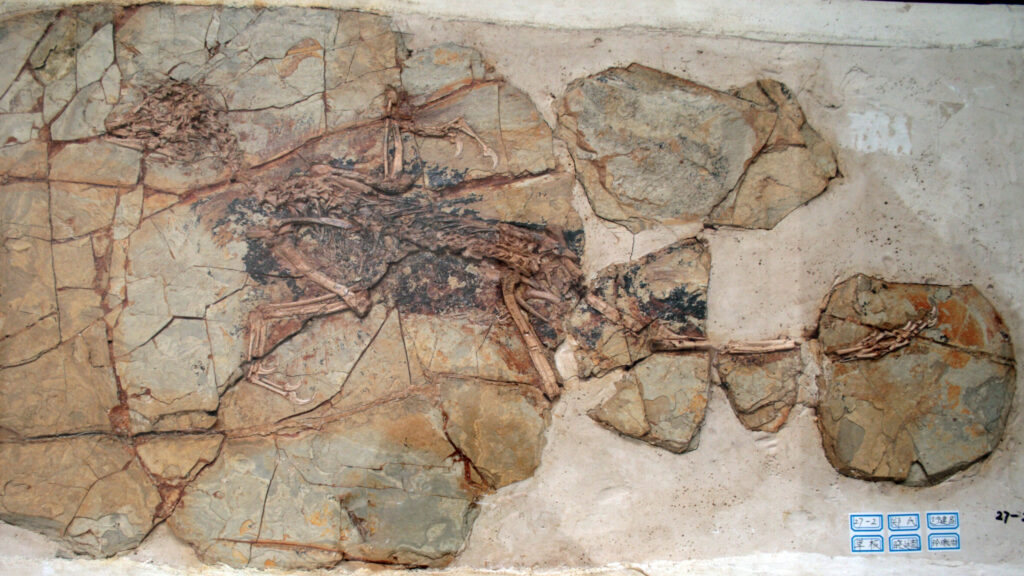
Our understanding of Archaeopteryx’s exact position in the dinosaur-bird transition has evolved considerably as new analytical methods and fossil discoveries have emerged. Initially hailed simply as the “first bird,” phylogenetic analyses now place Archaeopteryx in a more nuanced position—either as the most primitive bird or as a very bird-like non-avian dinosaur, depending on exactly how the group Aves is defined. Most analyses place it within the broader group Avialae, alongside other early bird-like dinosaurs such as Anchiornis and Xiaotingia. Recent cladistic studies using hundreds of anatomical characteristics suggest Archaeopteryx is slightly more primitive than some other Jurassic fossils like Aurornis and Anchiornis, potentially demoting it from its traditional position as the earliest bird. These shifting classifications reflect the fundamentally continuous nature of evolution, where drawing exact boundaries between groups becomes increasingly difficult the closer we look at transitional forms. Rather than diminishing Archaeopteryx’s importance, this complexity highlights its crucial position at the blurry boundary between non-avian dinosaurs and true birds.
The Legacy Continues: What Archaeopteryx Still Teaches Us
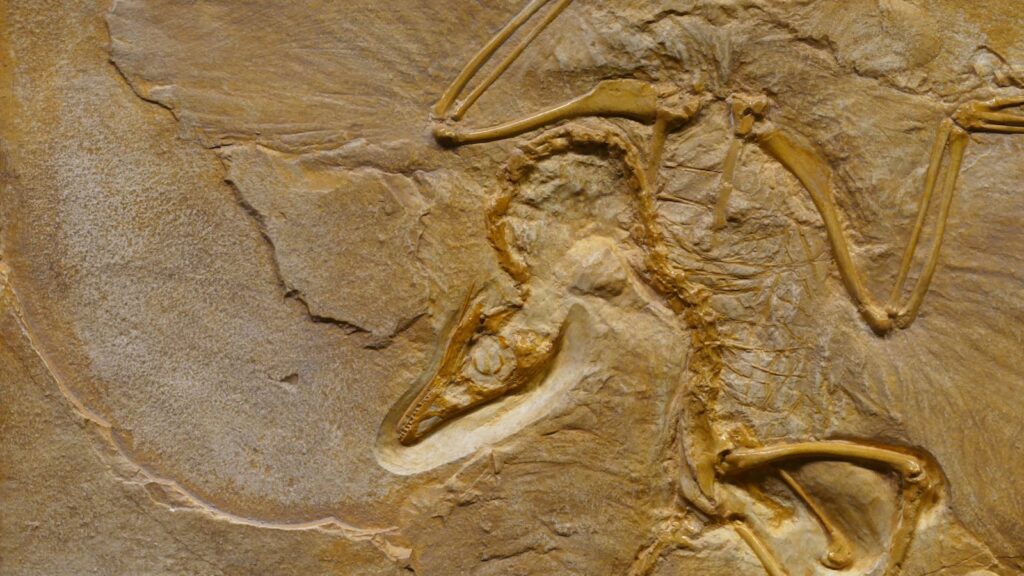
Over 150 years after its discovery, Archaeopteryx continues to influence how scientists approach fundamental questions in evolutionary biology, demonstrating the enduring value of key transitional fossils. It remains a powerful teaching tool for explaining concepts like mosaic evolution, where different parts of an organism evolve at different rates, creating creatures with mixed characteristics. Archaeopteryx has shaped research priorities in paleontology, inspiring dedicated searches for other transitional fossils across major evolutionary boundaries. Its discovery also established a methodological precedent for how scientists identify and interpret transitional forms, balancing anatomical details with broader evolutionary patterns. As new specimens continue to be found and analyzed with ever-more-sophisticated techniques, Archaeopteryx remains at the center of active research into the dinosaur-bird transition. Perhaps most importantly, it stands as one of paleontology’s most compelling success stories—a predicted missing link that was found, studied, and ultimately helped confirm Darwin’s then-controversial theory about the branching pattern of evolution through natural selection.
Conclusion
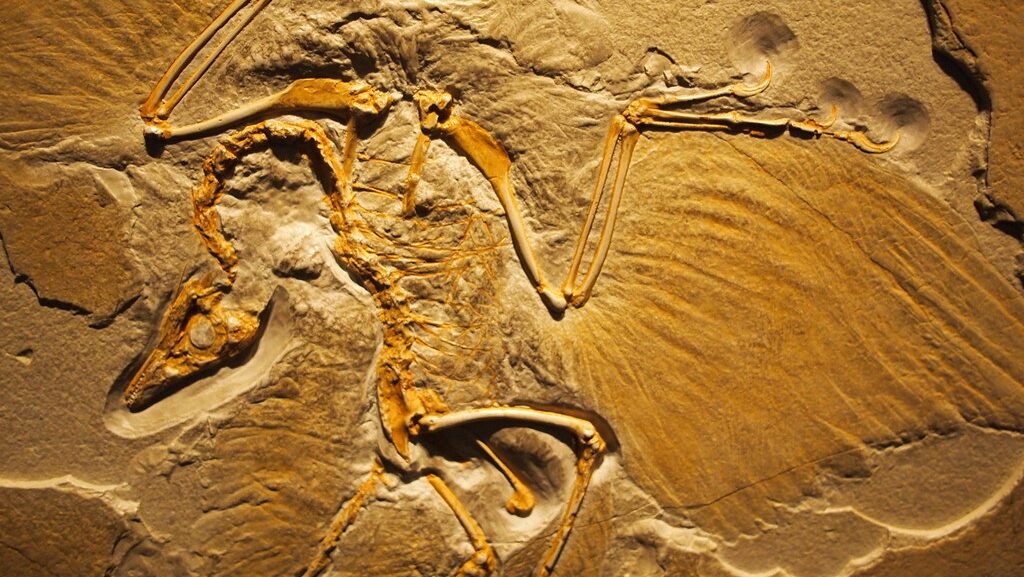
Archaeopteryx stands as one of science’s most important fossils, having fundamentally altered our understanding of evolution and the origins of flight. From its fortuitous discovery shortly after Darwin published his revolutionary theory to its continuing relevance in modern research, this remarkable creature has taught us that evolutionary transitions occur through a series of functional intermediates rather than sudden leaps. It demonstrated that birds evolved from dinosaurs, that feathers predated flight, and that complex adaptations develop gradually through processes like exaptation. As new analytical techniques and fossil discoveries continue to refine our understanding of the dinosaur-bird transition, Archaeopteryx remains the iconic centerpiece of this evolutionary story—a creature caught between worlds that helps us understand how one group of dinosaurs took to the skies and gave rise to the 10,000+ species of birds that surround us today.
